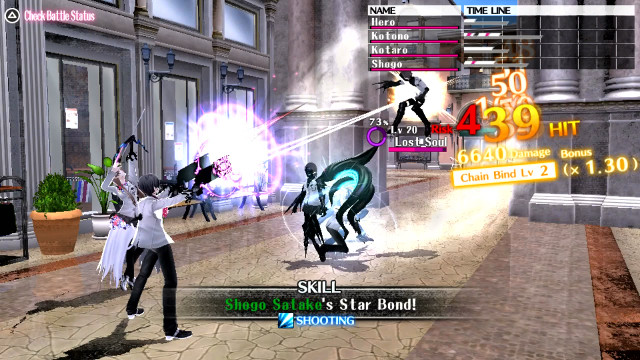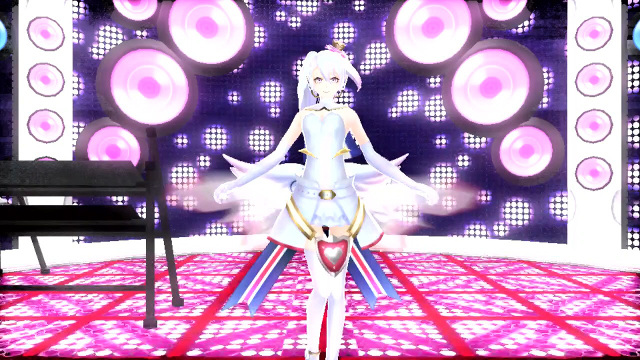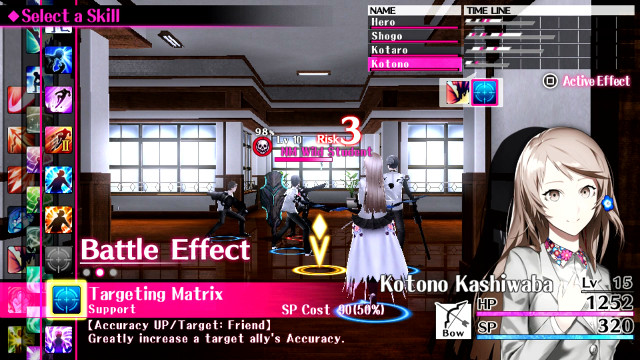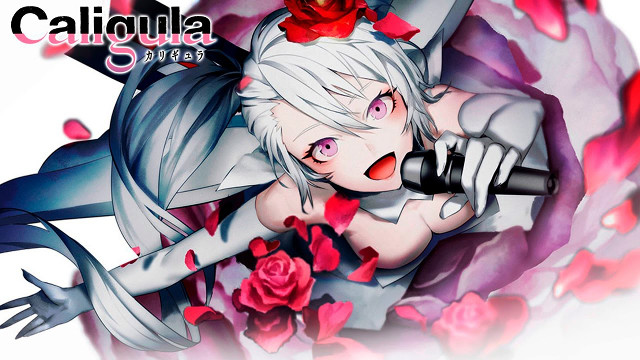Penned by Tadashi Satomi, the famed writer for the first three Persona games, The Caligula Effect has a lot in common with the Persona games he wrote back on the original PlayStation. Confusing dungeons, a complex but ultimately convoluted plot, and overbearing gameplay is all here in this alternate reality, high school JRPG.
As soon as the game begins, it wastes no time going from a normal day at school to teleporting you to an alternate universe to battling your first group of enemies. This is all surprisingly done in a matter of minutes. Though the game does give you a tutorial leading into your first fight, it is lengthy, wordy, and ironically, not necessarily enough to accurately prepare you for the large amount of skills you immediately have access to. That’s what we’re here for, so let’s get started with five tips you’ll need.
1. Back To School

Like we said, right off the bat, you are introduced to the combat in The Caligula Effect with two enemies in front of you with little explanation of the over a dozen skills you instantly have at your disposal. Skills are broken down into four categories, three of which are accessible by using left or right on the D-pad during battle.
Catharsis Effect
These are your basic abilities you’ll use for offensive attacks. Beneath the name of each skill, you’ll see its power, SP cost, what type of attack it is, and a brief description.
Power and cost are pretty self-explanatory, but things begin to get hairy when you get to the rest. The type of attack is key to understanding what it’s best used for. There are basic and power shots for strong attacks, guard breaks for bringing down defense, and counter shots for countering specific enemy attacks.
Battle Effect
Battle Effect skills are defensive skills primarily used for your character. These are relatively low-costing abilities that apply a variety of benefits ranging from timing perfect cooperative attacks with party members to restoring SP to enhancing your defense.
Affection Effect
The group of skills here are also defensive support skills that are useful for yourself, party, and even targeted enemy. The skills here are typically more powerful than the Battle Effects, but at the expense of higher SP cost. Useful skills found here are ones like dodging out of the way of an attack, resurrecting an ally, and increasing the amount of XP for your entire party.
Passive Effect
The only category not activated during combat, this group of skills are constantly in effect nonstop. They contain a variety of small boosts to your character and party, such as stronger attacks. More on these in a little bit.
2. Use The Right Moves

Combat can be pretty finicky in The Caligula Effect. As we mentioned above, there are just an overwhelming number of skills to use. The game utilizes your typical turn-based combat with an intriguing twist. A major additional feature is the Imaginary Chain. Utilizing the world’s digital aspect, you are able to chain up to three attacks in one turn. In addition, each person on your team can take advantage of this, essentially meaning you can chain a total of 12 attacks with your four-person party per turn.
Maximizing your skill output using the Imaginary Chain is a necessity, because it allows for a quick burn through your target, and it saves a decent amount of SP for your next turn. The other benefit of the chain is the ability to catch a glimpse at the future and preview what exactly your current chain of attacks will do upon execution. This feature is surprisingly accurate and detailed, breaking down everything from number of hits to damage dealt to you and your enemy. While it slows down the action and makes battles a little longer as you preview, it is crucial in the harder fights like bosses and post-game content.
Something not well explained in the game is the fact that there are attributes to each attack and they have other types of attacks they are strong or weak against. Some attacks work better versus aerial enemies or grounded enemies and are useless against the opposite. It is even possible to launch a grounded enemy in the air for a short time and use a series of combo attacks to land massive damage before they reach the floor again.
3. Read The Tutorials

You might be thinking that this is a strange tip, and you’d be right. However, it is vital for your survival in this game that you read and absorb all of the tutorials, of which there are a fair amount. Should you have forgotten something (which you probably will) or need clarification, all tutorials are easily accessible from any save point. Not only that, but there are tips available as well. Tips is a misleading name for this section, because they have a hidden purpose.
Tips obviously give you a better idea of how to handle the camera during battle or how to escape from battle, but it also contains the various settings you can turn off and on in the game. Here, you can switch to beginner’s mode where the game automatically picks the right counter shots and abilities each turn. You can even turn on new game plus and a lot of the post-game content from here, which is great for when you’ve leveled up enough and are looking for an appropriate challenge.
4. Meet Your New Best Friends

The Causality Link feature in The Caligula Effect is so unique and promising, but it isn’t explained very well. For veteran Persona fans, it is basically the Social Links or Confidants, except the Causality Link hosts more than 500 students for you to meet and build a relationship with. The process of gaining affinity with a person is simple; just speaking with them over and over until you reach a milestone or lock.
The problem is, a lot of students have to be unlocked through either a quest or gaining affinity with one of their friends. By accessing the Causality Link in the main menu, you can dive into the entire complex web of interconnected relationships and see which person is required to unlock whomever. Not only that, but you can see what passive ability is gained by that person’s friendship and prioritize your preferred abilities. These abilities can be small boosts to XP or attack, or even bigger boosts that come at the cost of less defense and the like.
5. Quick Tips

Instead of just leaving you off on one more tip, we have several of them for you. They’re quick, though, so you gotta keep up!
- Though the game doesn’t really let you know, you gain skill points each level for every party member that can be applied in the Skill Reel tab of the main menu.
- A simple combo you can spam relatively early on is Vintage Strike (launches them in the air), followed by Impulse Spinner (strong against aerial enemies), and finally, Rapid Fire (an insane 18 hit combo attack).
- Be mindful of the percentage by each classmate’s name, as higher ones are more prone to suddenly change into monsters, especially if you engage in combat near them.
- You can move the camera during combat with the right stick for better seeing the action when fighting in narrow corridors or small spaces.
- You can message anyone you are friends with anytime. Doesn’t really help with anything in the game, but it is a nice lore addition for fans of the story.
Good luck!











